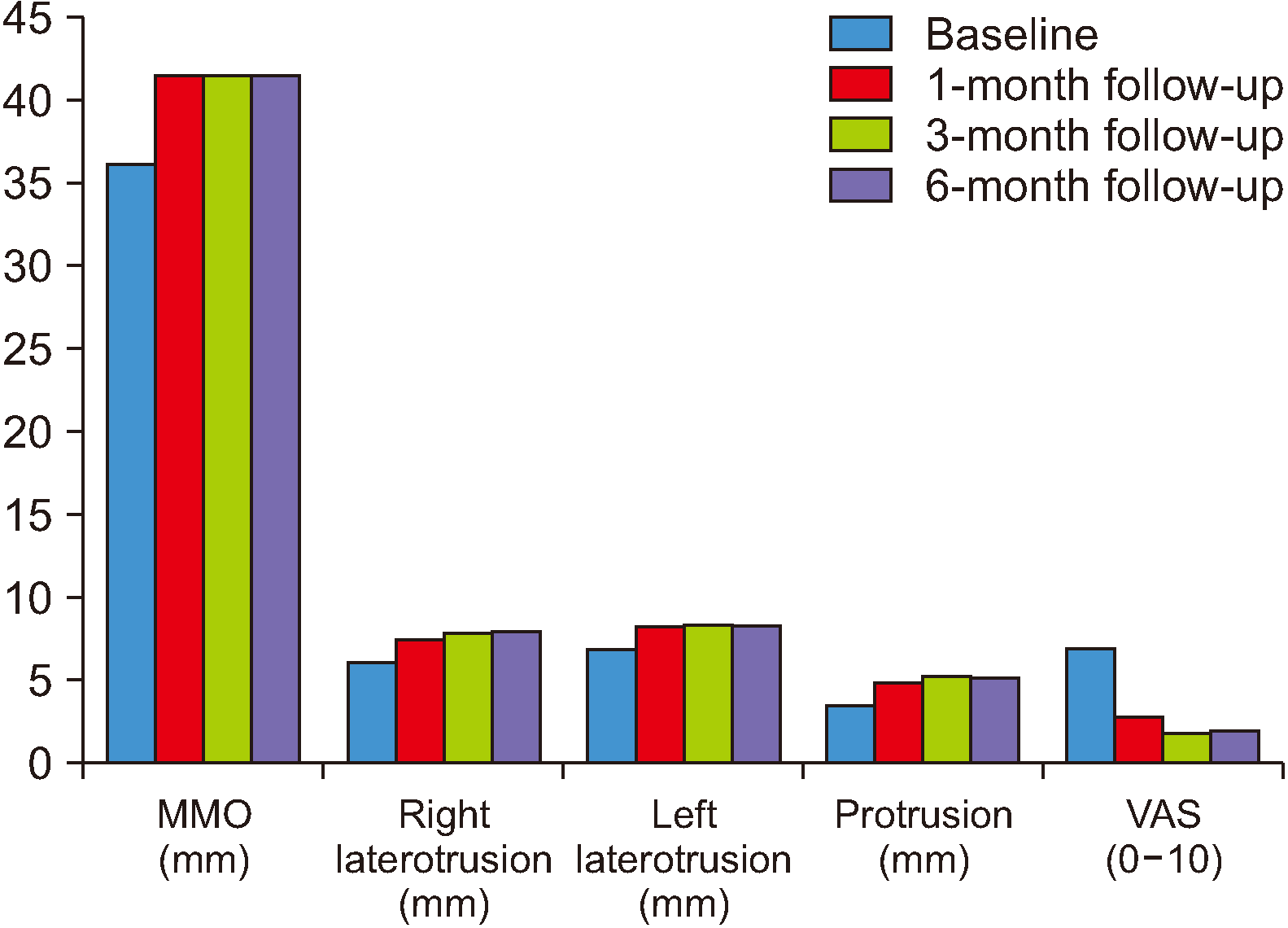3. Miloro M, Ghali GE, Larsen P, Waite P. 2012. Peterson's principles of oral and maxillofacial surgery. 3rd ed. People's Medical Publishing House;Shelton:
9. van der Meulen MJ, Lobbezoo F, Aartman IH, Naeije M. 2006; Self-reported oral parafunctions and pain intensity in temporomandibular disorder patients. J Orofac Pain. 20:31–5. PMID:
16483018.
12. Uchida M, Yatani H, Ishigaki S, Toda M, Morimoto K. 2008; Relations among TMD, bruxism, lifestyle, and psychological stress. Prosthodont Res Pract. 7:171–3. DOI:
10.2186/prp.7.171.

15. Maluly M, Andersen ML, Dal-Fabbro C, Garbuio S, Bittencourt L, de Siqueira JT, et al. 2013; Polysomnographic study of the prevalence of sleep bruxism in a population sample. J Dent Res. 92(7 Suppl):97S–103S. DOI:
10.1177/0022034513484328. PMID:
23690359.

17. American Academy of Sleep Medicine. 2014. International classification of sleep disorders. 3rd ed. American Academy of Sleep Medicine;Darien (IL): p. 303–11.
23. Schiffman E, Ohrbach R, Truelove E, Look J, Anderson G, Goulet JP, et al. 2014; ; International RDC/TMD Consortium Network, International association for Dental Research; Orofacial Pain Special Interest Group, International Association for the Study of Pain. Diagnostic criteria for temporomandibular disorders (DC/TMD) for clinical and research applications: recommendations of the International RDC/TMD Consortium Network* and Orofacial Pain Special Interest Group†. J Oral Facial Pain Headache. 28:6–27.
https://doi.org/10.11607/jop.1151
. DOI:
10.11607/jop.1151. PMID:
24482784. PMCID:
PMC4478082.

26. Güleç M, Taşsöker M, Özcan S. 2019; [Bruksizmin tanı ve tedavisinde güncel yaklaşımlar]. Selcuk Dent J. 6:221–8. Turkish.





 PDF
PDF Citation
Citation Print
Print



 XML Download
XML Download